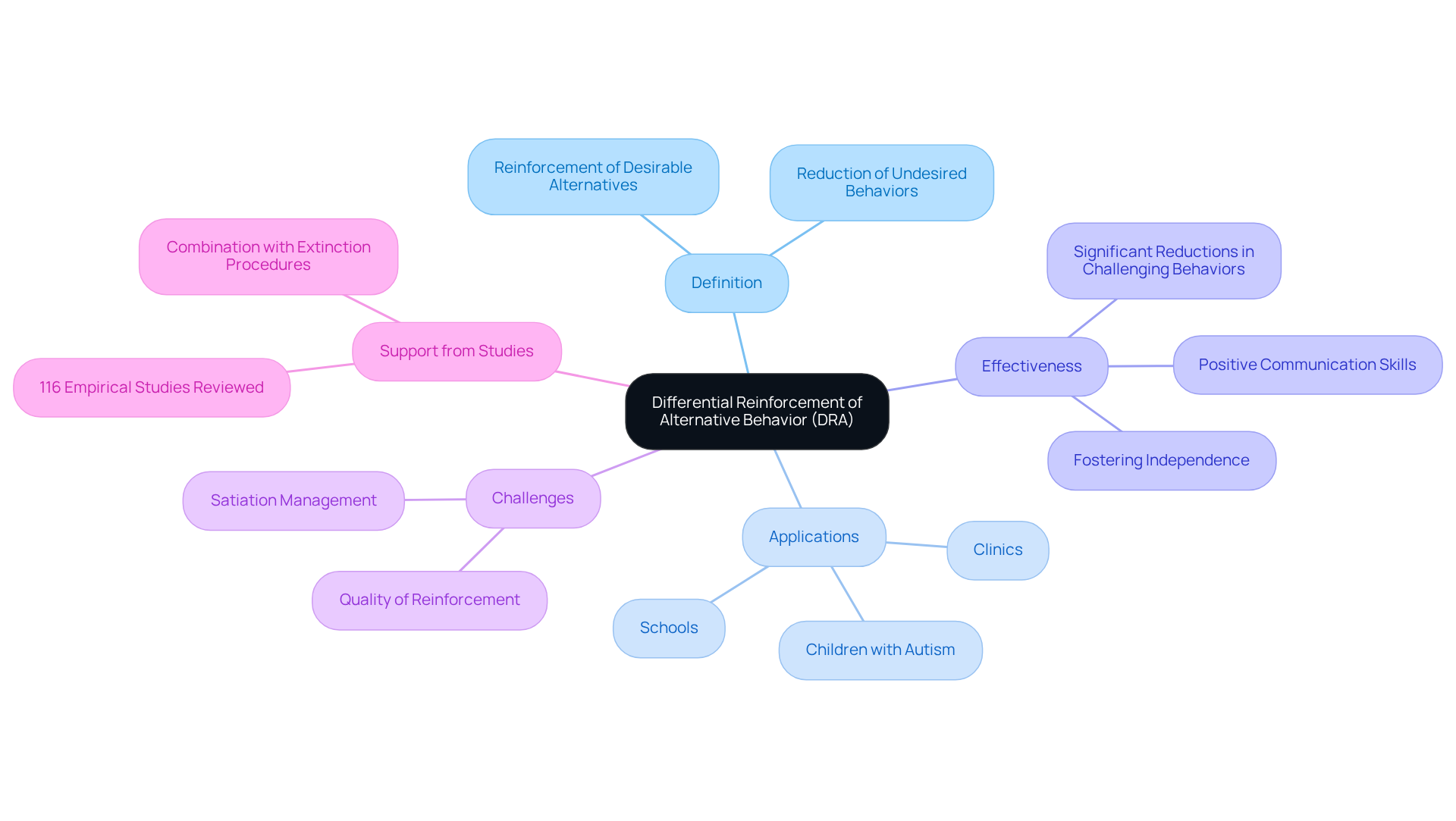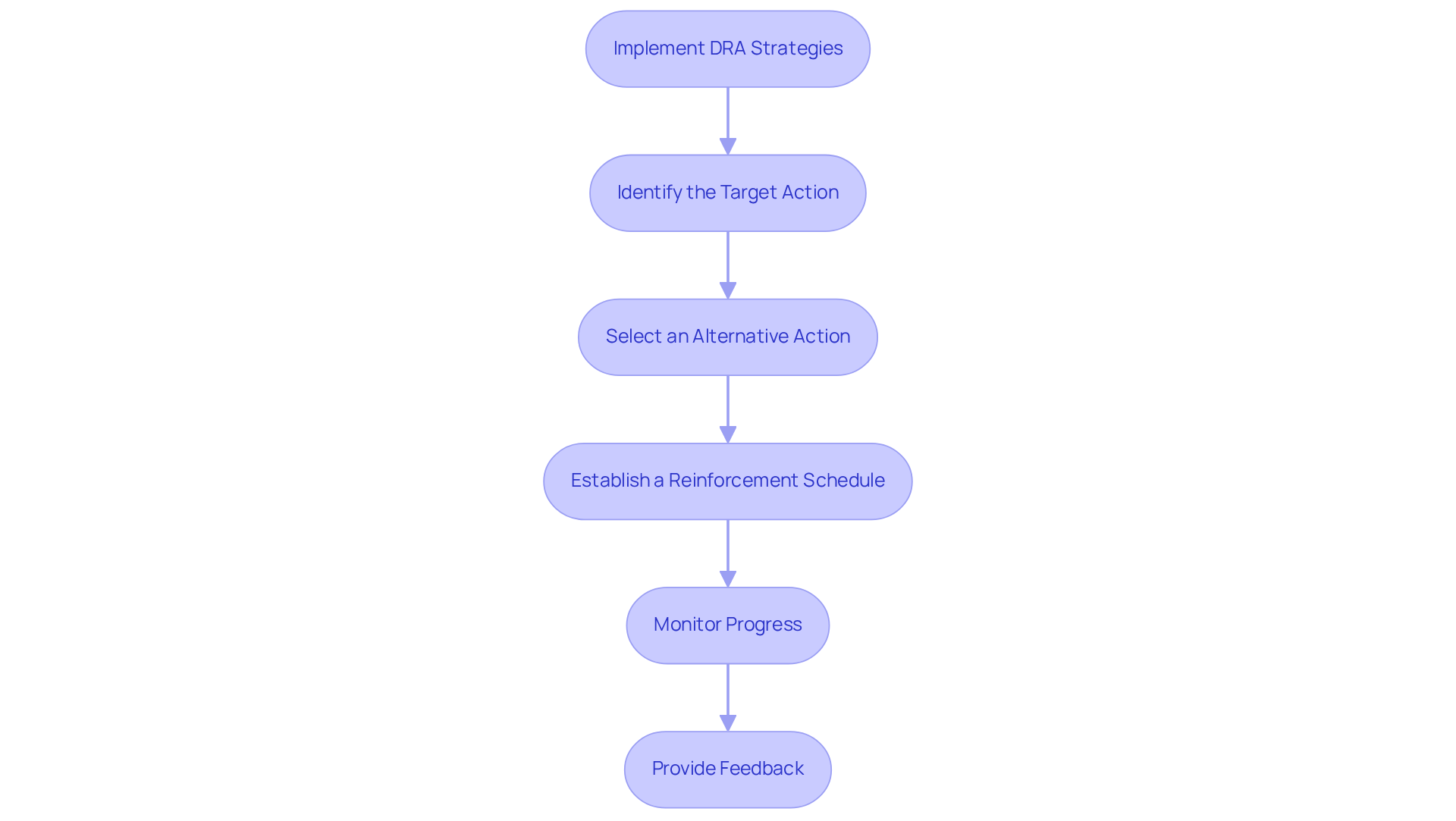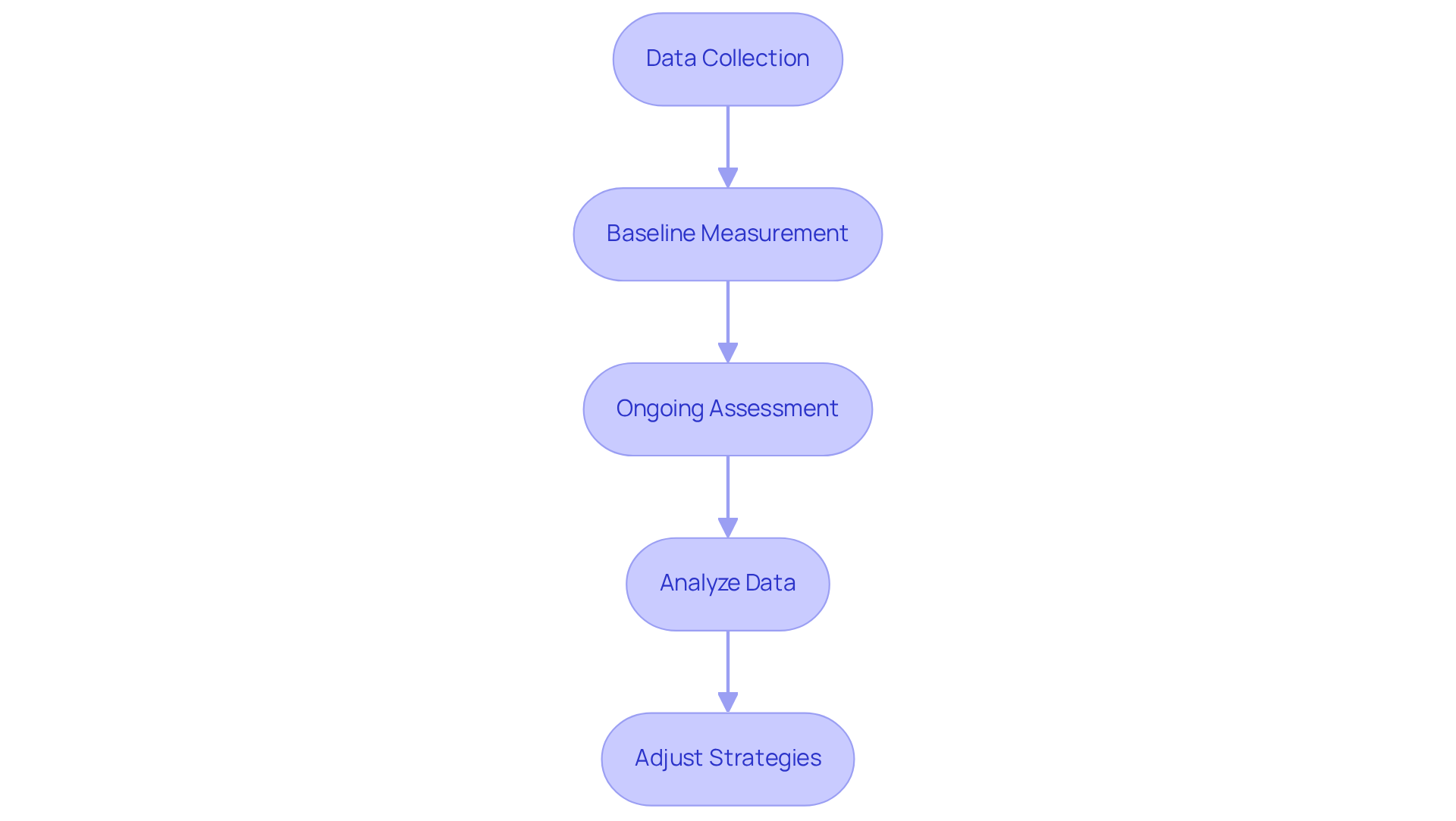June 26, 2025

Differential reinforcement of alternative behavior (DRA) stands as a pivotal technique in Applied Behavior Analysis (ABA) therapy. It emphasizes the reinforcement of desirable behaviors, effectively diminishing the occurrence of undesirable ones. This article underscores the critical nature of DRA by illustrating its dual function:
This is achieved through structured reinforcement strategies and continuous assessment of behavioral changes, ensuring a comprehensive approach to behavior modification.
Differential reinforcement of alternative behavior (DRA) stands out as a transformative strategy within Applied Behavior Analysis (ABA), presenting a structured approach to reshaping behavior. By promoting positive actions and diminishing unwanted ones, DRA not only enhances therapeutic outcomes for individuals, particularly those with Autism Spectrum Disorder, but also equips practitioners with effective techniques to foster independence and social skills. Yet, a pressing challenge persists: how can therapists ensure the consistent application and effectiveness of DRA amidst varying individual needs and potential obstacles?
Differential reinforcement of alternative behavior stands as a pivotal behavioral strategy within Applied Behavior Analysis (ABA), designed to reinforce specific actions while withholding reinforcement for undesired behaviors. This technique is not merely beneficial; it is essential in ABA therapy, as it utilizes differential reinforcement of alternative behavior to foster the development of positive behaviors while simultaneously reducing maladaptive ones.
By focusing on the enhancement of favorable actions using differential reinforcement of alternative behavior, practitioners can effectively shape conduct, establishing it as a cornerstone of successful ABA interventions. The significance of this method lies in its ability to create a structured environment where positive behaviors are consistently recognized, leading to improved outcomes for individuals undergoing therapy, particularly those with Autism Spectrum Disorder (ASD).

Differential reinforcement of alternative behavior (DRA) is a key strategy within differential reinforcement, emphasizing the reinforcement of a desirable alternative behavior that serves the same purpose as the unwanted behavior. For example, when a child frequently shouts for attention, a therapist might reinforce the child for raising their hand instead. This approach employs differential reinforcement of alternative behavior to not only reduce the occurrence of undesired conduct but also to teach the individual a more socially acceptable method to achieve similar outcomes.
Recent studies underscore that DRA proves particularly effective across various settings, including schools and clinics, where the objective is to replace maladaptive behaviors with constructive alternatives. Notably, children with autism spectrum disorder have exhibited significant reductions in challenging behaviors when differential reinforcement of alternative behavior is implemented, as this approach promotes positive communication skills and fosters independence.
Additionally, a comprehensive review encompassing 116 empirical studies corroborates DRA's efficacy across diverse ages, environments, and diagnoses. ABA professionals emphasize that "employing Differential Reinforcement of Alternative actions (DRA) is more effective when paired with extinction procedures," highlighting its potential for substantial improvements in behavioral outcomes.
Nonetheless, challenges such as managing the quality of reinforcement to prevent satiation must be addressed, ensuring that DRA remains a vital tool within the ABA therapist's toolkit.

To effectively implement Differential Reinforcement of Alternative behavior (DRA), practitioners must adhere to several key strategies that enhance intervention outcomes:
Employing these strategies can significantly enhance the efficacy of interventions using differential reinforcement of alternative behavior, encouraging positive changes and fostering independence in clients.

To effectively measure the impact of differential reinforcement of alternative behavior on behavior change, practitioners must adhere to essential steps that ensure systematic evaluation and adjustment.
Data Collection: Begin with direct observation methods to gather data on the frequency of both target and alternative behaviors. Employ tally sheets or advanced digital tracking tools to facilitate precise monitoring. Research indicates that notable progress is observed in 90% of young individuals when recommended hours are fully implemented with active caregiver involvement.
Baseline Measurement: Establish a baseline by documenting the frequency of the target behavior over a defined period before implementing DRA. This baseline acts as a critical reference point for evaluating subsequent changes in behavior.
Ongoing Assessment: Once the DRA intervention is underway, maintain regular data collection to monitor behavioral changes. Focus on identifying patterns, particularly a decrease in target behaviors and an increase in alternative actions. Continuous assessment is vital, as highlighted in recent studies, to ensure interventions remain effective and tailored to individual needs.
Analyze Data: Conduct a comprehensive review of the collected data to evaluate the effectiveness of the DRA intervention. A successful outcome is indicated by a reduction in the target behavior alongside an increase in the differential reinforcement of alternative behavior. As noted by Volkert et al., the effectiveness of DRA is enhanced when extinction strategies are incorporated.
Adjust Strategies: Based on the data analysis, make informed adjustments to the DRA intervention as necessary. This may involve modifying the reinforcement schedule, refining the alternative behavior, or providing additional support to facilitate the individual's progress. Addressing challenges in implementing DRA is crucial for ensuring that interventions remain effective and customized to individual needs.

Differential Reinforcement of Alternative Behavior (DRA) stands out as a pivotal strategy within Applied Behavior Analysis (ABA), aimed at fostering positive behaviors and reducing maladaptive ones. This approach not only amplifies the effectiveness of therapy but also cultivates a structured environment that promotes growth, particularly for individuals with Autism Spectrum Disorder (ASD). By emphasizing the reinforcement of desirable behaviors, DRA is instrumental in shaping conduct and enhancing therapeutic outcomes.
Throughout this article, we have delved into several critical aspects of DRA, encompassing its definition, implementation strategies, and the necessity of systematic measurement. Effective practices, such as:
are vital for successful intervention. Furthermore, ongoing assessment and data analysis emerge as essential components for gauging the impact of DRA on behavior change, ensuring that interventions are tailored to meet individual needs.
In conclusion, the importance of mastering Differential Reinforcement of Alternative Behavior cannot be overstated. By embracing advanced techniques and best practices in ABA therapy, practitioners can drive meaningful behavior change that fosters independence and enhances the overall quality of life for clients. A steadfast commitment to continuous learning and adaptation is crucial in unlocking the full potential of DRA, ultimately leading to more successful outcomes in behavior modification.
What is differential reinforcement in the context of ABA therapy?
Differential reinforcement in ABA therapy refers to a strategy that reinforces specific behaviors while withholding reinforcement for undesired behaviors, aiming to promote positive actions.
Why is differential reinforcement of alternative behavior important in ABA therapy?
It is essential because it helps develop positive behaviors while simultaneously reducing maladaptive ones, creating a structured environment that enhances therapeutic outcomes.
How does differential reinforcement of alternative behavior impact individuals with Autism Spectrum Disorder (ASD)?
This method leads to improved outcomes for individuals with ASD by consistently recognizing and reinforcing positive behaviors, thereby shaping their conduct effectively.
Our expert recruitment strategies and AI-driven sourcing ensure that you receive top-notch candidates quickly, without compromising on quality. Whether you’re looking for BCBAs, Clinical Directors, or RBTs, we’ve got you covered.